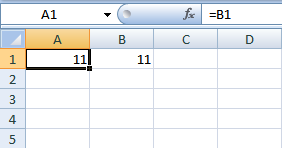

cell referencing), and the third table portrays the formula that we used (i.e. The first contains the original Data, the second contains a Result that appears using the formula (i.e. Let us understand this with a small example.īelow is an image that displays the three different tables. Relative references are very useful when you have a range of cells and you want the references to relatively change as and when you copy the formula down to other cells. Relative Cell Referencing in Excel:Ī Relative cell reference changes when copying or moving the formula or cell value to a different location in the worksheet. There are three types of cell references in MS Excel:ģ.Mixed Reference 1. Then Excel shall calculate the sum of values present in those cells which are 10+5 = 15. For example, suppose we have the following data in cell A1 = 10 and cell A2 = 5. While writing formulas, the user can refer to cells/ range of cells which is the ultimate power of cell references in MS Excel. By default settings, each cell in Excel is denoted with a column letter and a row number. In Excel, a cell reference (example A1) is a combination of column name (i.e., A) followed by a row number (i.e., 1). Understanding Absolute, Relative, and Mixed Cell References in MS Excel would help you work more efficiently and save a lot of time! Let us directly dive into understanding what are cell references and the types of cell references in MS Excel present to ease our work.


 0 kommentar(er)
0 kommentar(er)
